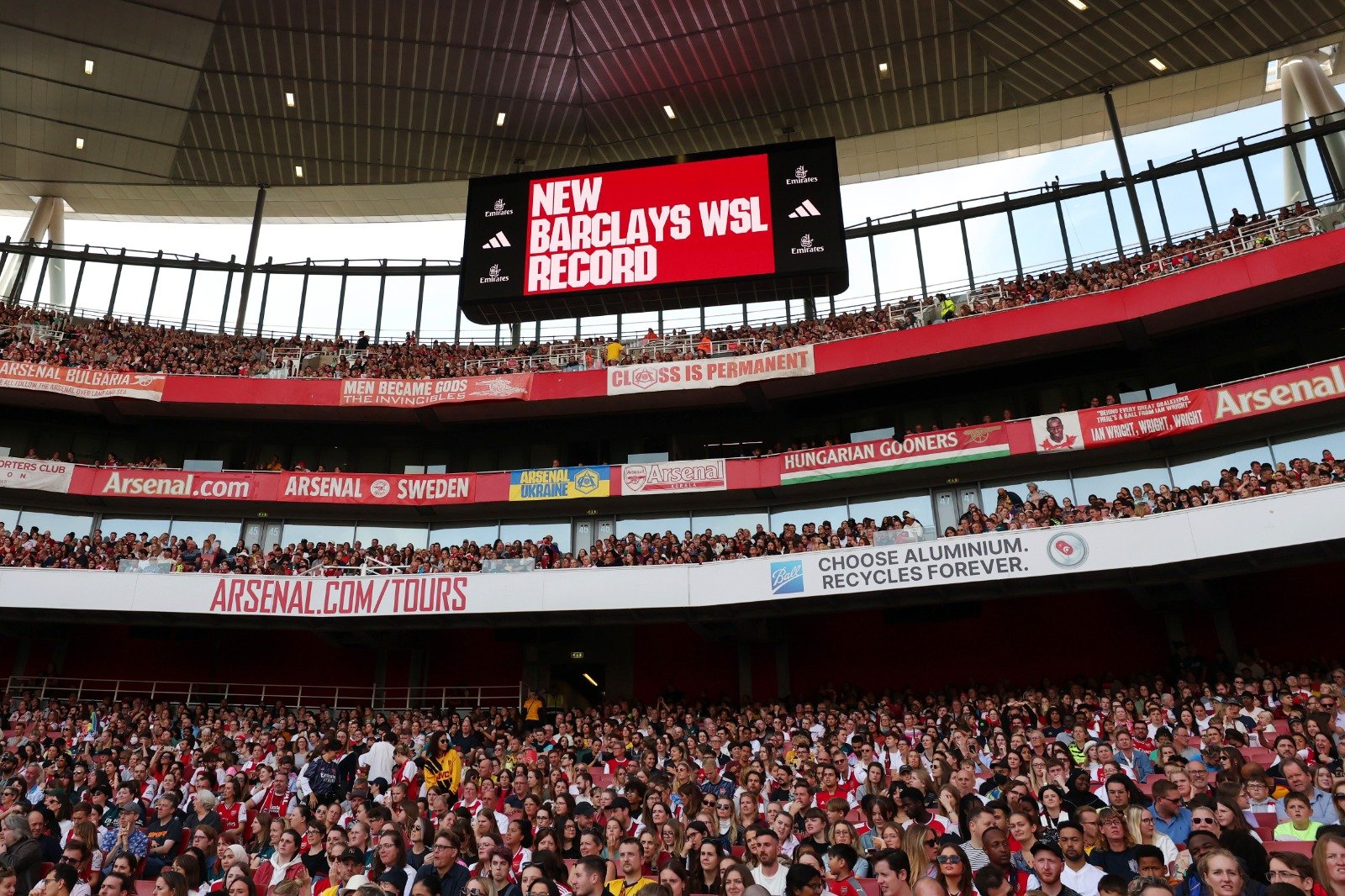DIGITAL TRENDS TO LOOK OUT FOR IN THE 2023-24 BARCLAYS WSL SEASON
Women’s football is at a turning point.
In July 2022, the Lionesses made history by winning the Euros before reaching their first-ever World Cup final just over 12 months later — spurring an increase in interest in the women’s game at all levels.
The success of the Lionesses has had a knock-on effect on England’s domestic competitions, in particular, with average attendances across matches in the Barclays Women’s Super League continuing to rise year-on-year.
But how is the league, its clubs and their players adapting to the upsurge in interest in the women’s game? We had a look at some of the key trends across social media:
CLUBS HARNESSING THE POWER OF THEIR PLAYERS
Last season, we saw average attendances in the Barclays Women’s Super League increase by almost 200% — and this trend sees no sign of slowing.
On the opening day of the 2023-24 season, we saw Arsenal break the league attendance record by almost 7,000 with 54,115 fans at the Emirates for their defeat against Liverpool.
Arsenal’s ticketing strategy on social media has been particularly successful. As they approach each milestone for ticket sales, the club typically teases and then releases bespoke content with their players to build anticipation amongst its fans:
This trend started last season and helped the club sell out the Emirates for their Champions League semi-final against Wolfsburg:
And given its success, we've seen it continue for their league matches at the Emirates this season — putting the stars of the FIFA Women’s World Cup front and centre to not only engage their own fans, but also entice followers of different national teams to attend an Arsenal match.
AN INCREASE IN BRANDED CONTENT
As women’s football increases in popularity, so does its commercial appeal.
Branded content is becoming more prominent across club content in the Barclays WSL, with newly promoted Bristol City featuring Your Parking Space on their matchday arrivals video.
With Google Pixel announcing partnerships with Arsenal and Liverpool, this is a trend we’re likely to see more of at the domestic level of women’s football as brands become more aware of its value.
CLUBS EMBRACING NEW PLATFORMS
In the first two weeks of this season, we’ve seen more women’s clubs embrace new digital platforms to connect with their supporters.
This summer, we saw Arsenal launch a TikTok specifically for their women’s teams, while in the most recent gameweek we’ve seen Manchester United incorporate Instagram broadcast channels into their matchday coverage.
Manchester United have used innovative tactics here to bring supporters closer to their club, such as using voice notes to convey the atmosphere in the ground to those following on from home.
We’ve also seen some clubs create channels specific to their women’s team on older platforms, with Tottenham Hotspur Women recently creating a separate YouTube account.
As interest in women’s football grows, so will the appetite for social content. The challenge for content and marketing teams will be whether they can increase and efficiently allocate production resources to cope with the increased demand.
FINDING INNOVATIVE WAYS TO COLLABORATE
Strategic collaborations have become the norm on Instagram, with clubs often harnessing the size of their men’s account to promote their women’s team.
In the men’s game, we’ve seen some clubs use this feature in a more innovative way, such as Arsenal, Bournemouth and the Premier League collaborating on a joint feature ahead of their recent Premier League fixture.
This could be a trend we could soon see in women’s football, and one that would be beneficial to smaller clubs when playing one of the top teams with a much larger following than their own.


